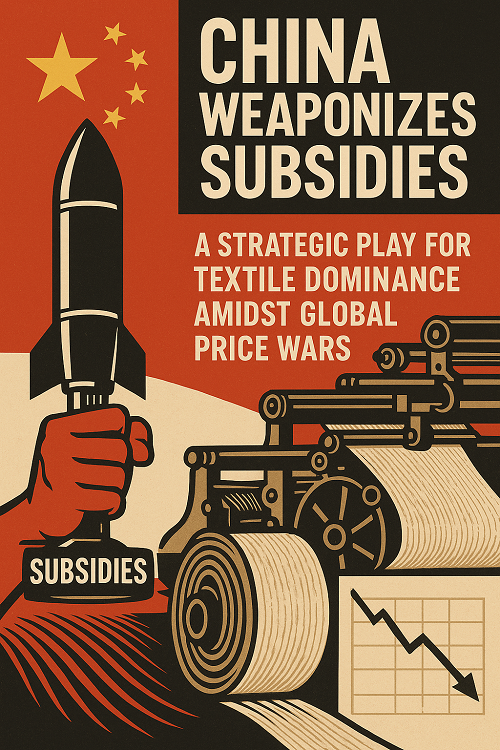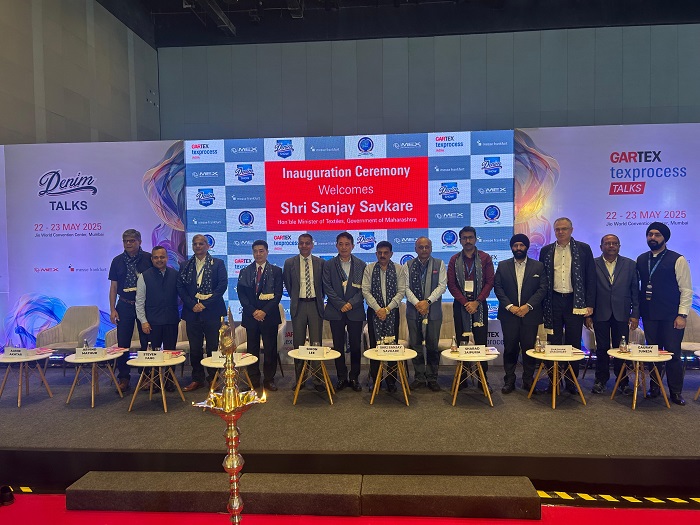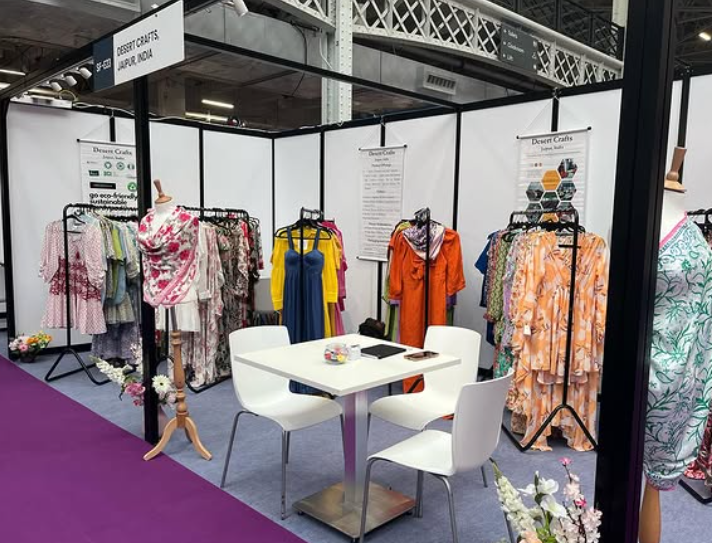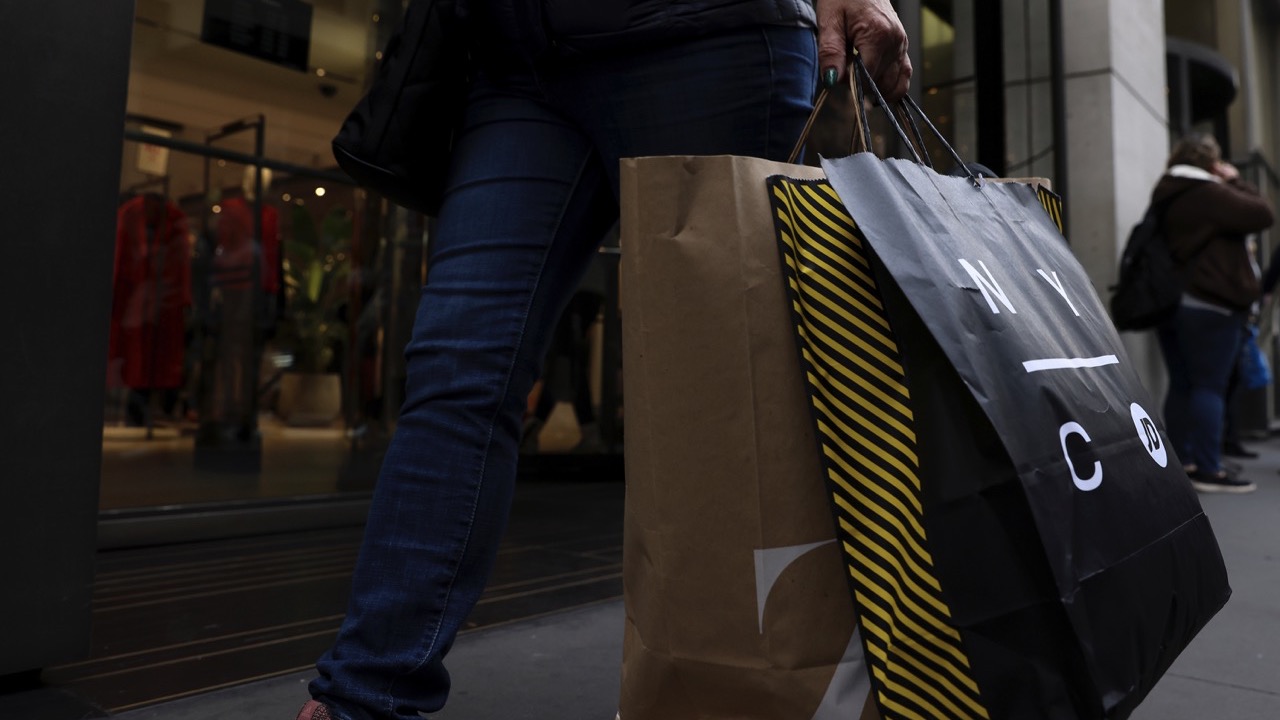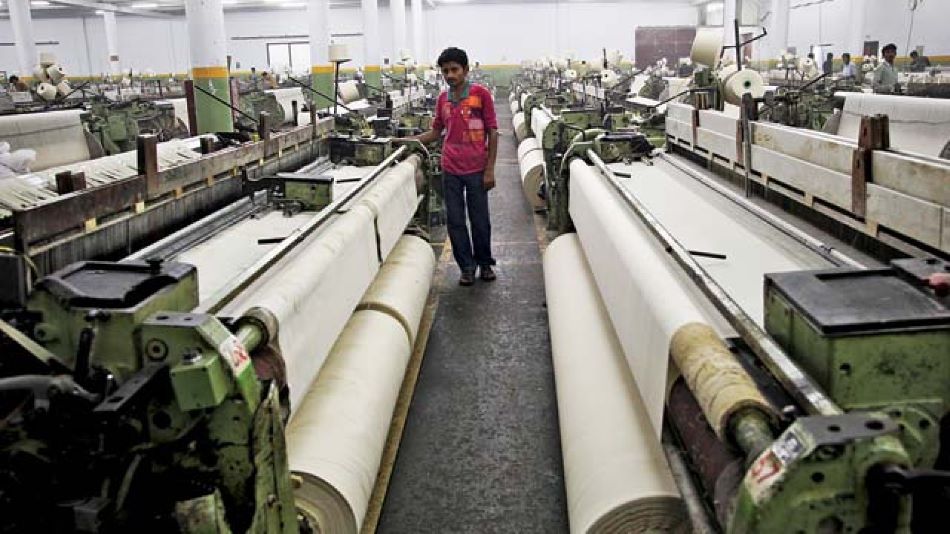
With the upcoming Union Budget expected to be an interim one, Indian textile and apparel industry is keeping its fingers crossed, hoping for measures that will provide much-needed fillip to the sector. Key industry bodies like AEPC, TEXPROCIL, SRTEPC, and CMAI have submitted their wishlist to the government, urging for measures to bolster their competitiveness and navigate challenges. What they want…
GST Uniformity across MMF value chain
A of the key demand from AEPC is the standardization of GST rates across the entire Man-Made Fibre (MMF) value chain. The current disparity – 18 per cent on fibre, 12 per cent on yarn and 5 per cent on fabric - leads to unutilized input credit and liquidity issues for Micro, Small & Medium Enterprises (MSMEs). A uniform 5 per cent rate, as proposed by AEPC, could ease cash flow and spur manufacturing.
Extension of Interest Equalization Scheme beyond March 2024
Another key demand is the extension and expansion of the Interest Equalization Scheme (IES) for the textile sector. The IES currently provides subsidized interest rates on loans for exports of made-up garments and home textiles. However, the scheme is set to expire in March 2024. The industry is requesting the government to extend the IES for at least another five years and expand its scope to cover all segments of the textile and apparel value chain. This would make Indian exports more competitive in the global market and boost domestic manufacturing. The industry is also seeking an expansion of the IES to cover a wider range of textile products and to address regional imbalances in the scheme's benefits.
AEPC suggests raising the rate to 5per cent for all apparel exporters, making pre and post-shipment Rupee export credit more accessible and boosting international competitiveness. Currently, the rates vary between 2 and 3 per cent, depending on the exporter category and product listings.
Promoting sustainable practices and branding
TEXPROCIL has highlighted the need for tax concessions for apparel manufacturers adopting Environmental, Social, and Corporate Governance (ESG) practices and adhering to international quality standards. This would incentivize sustainable production and attract conscious consumers. Additionally, budgetary support for branding and marketing ‘Made in India’ products is deemed crucial to compete effectively in the global market.
Focus on MSMEs and Skill Development
The SRTEPC, representing the synthetic and rayon textiles sector, advocates for additional support for MSMEs. Measures like easier access to credit, simplified compliance procedures, and skill development programs could significantly empower these enterprises.
Technological Upgradation and Research & Development
The Indian textile industry faces stiff competition from countries like Bangladesh and Vietnam, which have lower production costs and a more skilled workforce. To bridge this gap, the industry is seeking government support for technological upgradation and skill development initiatives. CMAI, representing garment manufacturers, highlights the importance of technological advancements and R&D initiatives. Budgetary allocations for upgrading machinery, adopting automation, and promoting R&D would enhance the industry's efficiency and innovation..
Boosting domestic market
Beyond exports, stimulating domestic demand is key. Tax cuts on textiles, increased government procurement of uniforms, and consumer awareness campaigns are all on the industry's wish list. These measures would help Indian textiles take a positive foot forward.
The upcoming interim budget though temporary, holds immense significance for the textile and apparel industry, especially considering the upcoming general elections. The government's response to these demands will be closely watched, as it could shape the sector's growth trajectory in the near future.
It's important to note that the interim budget typically covers the fiscal needs until the new government takes office after the elections. Therefore, its focus is often limited to essential expenses and immediate concerns. While long-term policy changes may not be announced, significant measures addressing the industry's immediate challenges could offer a much-needed boost.

After three dynamic days showcasing the latest in textile innovation and fashion trends, the international fabric show, Munich Fabric Start, concluded its Spring.Summer 2025 edition. With the denim trade show Bluezone and the innovation hub Keyhouse closing their doors earlier, the event provided a comprehensive overview of the evolving landscape of the European fashion industry.
Clarity in focus: A recap of the event
Under the overarching theme of "Clarity," the event gathered designers, buyers, product managers, and decision-makers to explore offerings from around 1,000 international suppliers across eight distinct areas. These areas, including Additionals, Fabrics, ReSource, Bluezone, Design Studios, Keyhouse, Sustainable Innovations, and The Source, served as focal points for discussions and engagements.
With a notable attendance of 11,700 visitors from 58 countries, Munich Fabric Start attracted renowned brands like adidas, BMW, C&A, Hugo Boss, and many others. The event's diverse audience highlighted its significance as a global platform for industry networking and collaboration.
Insights and perspectives: Voices from the industry
Sebastian Klinder, Managing Director of Munich Fabric Start, emphasized the importance of clarity and orientation in the current industry landscape. He underscored the event's role in providing a space for business, inspiration, and interaction, essential for navigating the future of fashion.
Trends and developments for Spring.Summer 2025
A return to craftsmanship and clear shapes marked one of the significant trends observed for the upcoming season. Denim, a perennial favorite, remained omnipresent, reflecting its versatility across various styles and price ranges. Additionally, natural materials such as linen and hemp gained prominence, particularly in casual workwear, alongside pastels and earthy tones.
Focus on sustainability: Bridging innovation and practice
Sustainability emerged as a central theme, with a dedicated focus on innovative fibers, recycling initiatives, and EU regulations shaping the industry's future. Platforms like Keyhouse played a crucial role in facilitating dialogue and collaboration between stakeholders, fostering the transition towards a more sustainable fashion ecosystem.
Highlights from Bluezone: Driving sustainable practices
Bluehouse, the denim hot spot, showcased the industry's commitment to sustainability through initiatives like the Denim Deal, which promotes the use of recycled materials in textile products. Personal encounters and exchange of ideas characterized events like Munich Fabric Night, emphasizing the importance of collaboration in driving industry-wide change.
Looking Ahead: View Premium selection
As the industry gears up for the Autumn.Winter 25 season, the upcoming View Premium Selection event in June promises to offer insights into future trends and innovations. With a focus on fabrics, denim, sportswear, and design, it serves as a vital platform for quick ordering and industry developments.
Industry voices: Perspectives on Munich Fabric Start
Key stakeholders, including designers, project managers, and industry specialists, shared their experiences and insights on the event. From the significance of sustainable innovations to the value of platforms like Keyhouse, their voices underscored the collaborative spirit driving positive change within the industry.
Conclusion: Driving transformation through collaboration
As the curtains close on Munich Fabric Start Spring.Summer 2025, the event leaves behind a legacy of clarity, sustainability, and collaboration. With a renewed focus on craftsmanship, innovation, and responsible practices, the European fashion industry sets its sights on a future defined by clarity of purpose and a commitment to sustainability.
Fueled by a potent cocktail of technological leaps and ever-changing consumer desires, the rayon filament yarn market is poised for explosive growth from 2024 to 2031,
The market will expand with new technologies and strategic partnerships, leading to diverse products and global reach. Trends like specific trend, another trend, and third trend will act as demand magnets, creating lucrative opportunities.
Eco-friendly practices and a focus on sustainability will be crucial for market success. Companies prioritising these aspects will be well-positioned for long-term growth.
The market will be led by companies who relentlessly refine their processes, products, and customer experiences. This unwavering commitment to excellence will be their key to navigating uncertainties and staying ahead of the curve.
Future demand in the Rayon Filament yarn market will be driven by technological breakthroughs, shifting consumer preferences, regulatory changes and new policies or regulations could impact production or demand.
Sudhir Sekhri, Managing Partner, Trendsetter International, has been appointed as the new Chairman of AEPC.
Replacing Naren Goenka, Sekri aims to scout for ways and means to arrest the declining RMG (ready-made garments) exports witnessed over the last few months. He also aims to take adequate measures market and product diversification.
According to Sekri, the industry is working to achieve exports target of $40 billion by 2030. It plans to scout for new sourcing destinations by realigning the supply chain,
An Executive Committee member of Apparel Export Promotion Council (AEPC) since 1990, Sekri has also been the Chairman for the Export Promotion Committee of AEPC for several years and Vice Chairman, AEPC for 2022 and 2023.
He diversified into RMG manufacture and exports after a five-year stinti in the family business of manufacturing and export of electric welding equipment.
Indian retailers faced a lackluster holiday season in December 2023, with overall sales growth of just 4 per cent compared to the previous year. Even with holiday discounts and the wedding season boosting some sectors, consumer spending remained muted across most categories.
Sales in December grew by a meager 4 per cent despite discounts and the wedding season. Sales across South India soared by 7 per cent while North, West, and East India lagged behind. The sales growth in South India was driven by high-value purchases like cars, houses, and electronics on EMI , while discretionary spending took a hit.
Like-for-like sales in existing stores dipped by 5 per cent as retail continued to struggle with sluggish demand due to inflation.
With inflation showing no signs of abating and global economic uncertainties looming, the upcoming months could be challenging for retailers. Adapting to changing consumer preferences and offering attractive financing options for high-value purchases may be the key to weathering the storm.
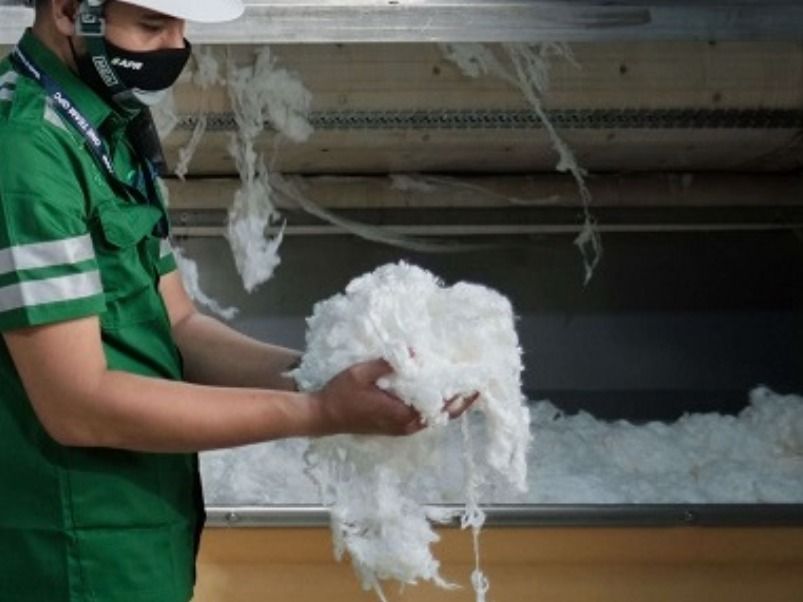
Demand for the Viscose Staple Fiber (VSF) and rayon yarn is booming in Asia. According to a subscription based ChemAnalyst predict, this will mostly likely to lead to rise in the prices of VSF. This price surge will be driven by an anticipated demand surges from downstream industries post-holidays, coupled with potentially tight VSF availability.
To meet this unforeseen demand, producers are launching and cutting short their annual holiday, hinting at their robust operational efficiency and market responsiveness.
Echoes of a similar boom in August 2023 resonate. Back then, the industry also defied seasonal lows, boasting high utilization rates and remarkably low inventory levels. This trend continues, with VSF stockpiles dropping from 28.5 days in July 2023 to just 22 days today.
Even with downstream industries anticipating a shorter-than-usual February break, analysts predict continued positive performance for VSF post-Spring Festival. Traditionally, February-April is a peak season fueled by strong demand, and this year's availability of loans and reduced financial pressures add to the positive outlook.
However, caution remains amidst the domestic cheer. Global economic uncertainties loom large, with the World Bank and IMF projecting a bleak 2024. While China's domestic demand seems to be recovering, price acceptance across sectors hasn't improved significantly. A cautious, gradual approach is recommended to navigate these potentially challenging global headwinds.
At the recent Bluezone event in Munich, Turkish denim giant Orta unveiled the world's biggest sustainable pair of jeans.
Christened "Steel Blue," this eco-friendly marvel is crafted from a rigid 2/1 Z twill denim fabric made with 80 per cent Cotton and 20 per cent post-consumer recycled cotton. Both fibers and the fabric itself were proudly manufactured in Turkey, showcasing Orta's commitment to sustainable practices.
To showcase this innovative material, Orta partnered with denim expert Wouter Munnichs to launch the Orta x Long John display jeans featuring iconic details like a single back pocket, cinch back, suspender buttons, and a vintage-style crotch rivet. A massive hangtag crafted from sustainable cotton completes the impressive ensemble.
The Orta x Long John jeans serve as a powerful symbol of Orta's dedication to sustainability and innovation.
Despite facing muted consumer spending, Shoppers Stop delivered a strong Q3 with a 7 per cent Y-o-Y sales growth to Rs 1,207 crore. The beauty segment emerged as the star performer, growing a remarkable 10 per cent led by fragrances and makeup.. This contributed to an overall beauty mix of 18 per cent.
Shoppers’ Stop’s fragrance sales soared 41 per cent, while makeup sales surged by 6 per cent pushing the beauty segment to 18 per cent of the overall mix.
Driven by premiumzation, average transaction value by grew 6 per cent, suggesting customers are willing to spend more on quality items.
The ‘Fashion for all’ format, Intune, continues to impress with four new stores added this quarter, bringing the total to 10. Full price sell-thru remained strong at 65%, and plans are in place for 14 more stores by FY24 end.
Shoppers Stop is on track to meet its FY24 target, adding 13 stores in Q3 across various formats (department, beauty, Intune, and airport). The retailer’s
GAAP EBITDA is lower than last year due to one-time income adjustments and inventory obsolescence provisions. However, the company remains debt-free with a net cash surplus of Rs 40 crore.
The Chinese spandex industry saw a mixed bag in 2023, with exports declining overall but experiencing some bright spots.
Total exports declined by 2 per cent to 69.6kt tons compared to 2022.
One of the major reasons for this decline is a significant drop in export unit price, which fell from $7.698/kg to $5.022/kg, a decrease of $2.676/kg.
Q1 saw the lowest volume of Spandex exports in recent years due to the Spring Festival and weak overseas demand. The depreciating value yuan value and growing demand fuelled the growth of spandex in major exporting them.
Spandex exports hit a five-year high in Q3 due to excess domestic supply and the favorable exchange rate. However, this demand once again declined by 11.4 per cent Y-o-Y in Q4 due to soft demand and the Red Sea tension.
In 2023, Spandex was exported to 110 countries or regions, up from 103 in 2022. Turkey remained the top destination though exports by the country declined by 31.1 per cent.
The reason for the decline in Turkey’s exports was attributed to high inflation in Europe and the US due to geopolitical issues. Spandex exports to other destinations like Taiwan, Brazil and Iran also declined.
To arrest this decline, the Chinese spandex industry needs to adapt to changing market conditions and focus on value-added products to remain competitive in the global market.
In a bid to enhance creativity and efficiency in fashion education, Kent State University School of Fashion has embraced the innovative CREATE PLUS software. The school, renowned for shaping the future of the US fashion industry, boasts around 1600 students in fashion design and merchandising, emphasizing real-world testing and self-confidence.
CREATE PLUS, a digital knitting program, has gained traction in recent years, with 20 programming stations now operational in the Knit LAB. Linda Ohrn-McDaniel, a key figure at the School of Fashion, highlights the software's significance for future career paths, emphasizing its versatility in teaching knitting and programming know-how.
Initially using M1plus alongside traditional methods, the school transitioned to CREATE PLUS for its advanced functionalities. Ohrn-McDaniel praises the software's clear visualization of knitted fabrics and simultaneous display of technical details, facilitating a comprehensive understanding of the intricate interrelationships in fashion design.
The shift from M1plus to CREATE PLUS was not without challenges, but Ohrn-McDaniel notes that students starting directly with CREATE PLUS find it more user-friendly. The school plans to utilize CREATE PLUS extensively in upcoming courses, focusing on creating virtual patterns and prototypes. Ohrn-McDaniel emphasizes a holistic approach to teaching, starting with manual techniques before introducing more efficient methods, ensuring a solid foundation of knowledge for the students.
Kent State's adoption of CREATE PLUS marks a transformative step in fashion education, aligning with industry trends and preparing students for dynamic careers in the ever-evolving landscape of fashion design and technology.
- 1
- 2
- 3
- 4
- 5
- 6
- 7
- 8
- 9
- 10
China Weaponizes Subsidies: A strategic play for textile dominance amidst global…
Despite the narrative of a global apparel pivot away from China, the reality on the ground paints a different picture.... Read more
Shift in fashion's value proposition, can speed and sustainability coexist?
Expanding on the recent LinkedIn post by Lubomila Jordanova, CEO & Founder of Plan A and Co-Founder of Greentech Alliance,... Read more
Gartex Texprocess India 2025 kicks off in Mumbai with global focus
The 2025 Mumbai edition of Gartex Texprocess India opened its doors at the Jio World Convention Centre on May 22,... Read more
EU Horizon T-REX project data reveals challenges for textile-to-textile recyclin…
A new report from the EU Horizon T-REX (Textile Recycling Excellence) Project, while focused on piloting a data model to... Read more
Source Fashion to showcase global ethical sourcing solutions in July 2025 editio…
Source Fashion, the UK’s leading responsible sourcing show, is set to return from 8-10 July 2025 at The Grand Hall,... Read more
CHIC September 2025 to return in Shanghai with ‘Fashion Picnic’ theme
China’s leading fashion trade event, CHIC 2025 (September), will return to the National Exhibition and Convention Center in Shanghai from... Read more
US consumer confidence dips amidst economic uncertainty
In April 2025, the US consumer sentiment recorded a shift as confidence levels dipped, indicating potential headwinds for the economy.... Read more
Secondhand on the rise in Europe as it readies for a €26 bn fashion revolution b…
Across Europe, pre-owned garments are shedding their ‘used’ label and stepping into the spotlight as a mainstream force. A new... Read more
India-Bangladesh Trade in Turmoil: Retaliatory measures threaten regional commer…
The burgeoning trade relationship between India and Bangladesh has hit a turbulent patch, marked by a series of retaliatory trade... Read more
Peeling Back the Fabric: Glimpact study gives true ecological threads of apparel…
A groundbreaking new study by Glimpact, has pulled back the curtain on the often-obscured environmental footprint of the apparel industry,... Read more

